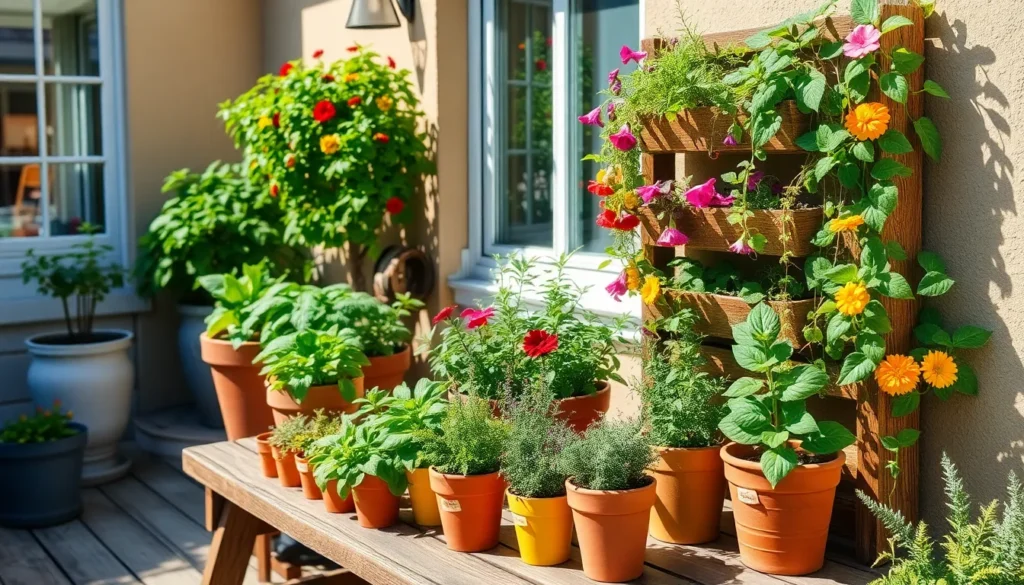Imagine stepping into your small yard and being greeted by a vibrant oasis of colors, textures, and scents, all thriving in beautiful containers. Whether you’re a novice just starting your gardening journey or a seasoned green thumb looking to maximize your space, “Container Gardening Tips for Small Yards” is your ticket to transforming even the tiniest outdoor area into a lush paradise. This guide is packed with creative and practical design ideas that cater to every gardener’s dream of creating a thriving garden, no matter the size of their yard.
For those who might be short on space but rich in passion, container gardening offers an exciting solution. Not only does it allow flexibility in design and arrangement, but it also brings the joy of gardening to any environment, from urban balconies to compact patios. You’ll discover techniques that make plant care a breeze and learn how to curate a garden that reflects your personal style. Dive into the pages ahead with confidence, knowing that these tried-and-true tips will empower you to cultivate a garden that bursts with life and beauty, right at your doorstep.
Choose Compact Plant Varieties
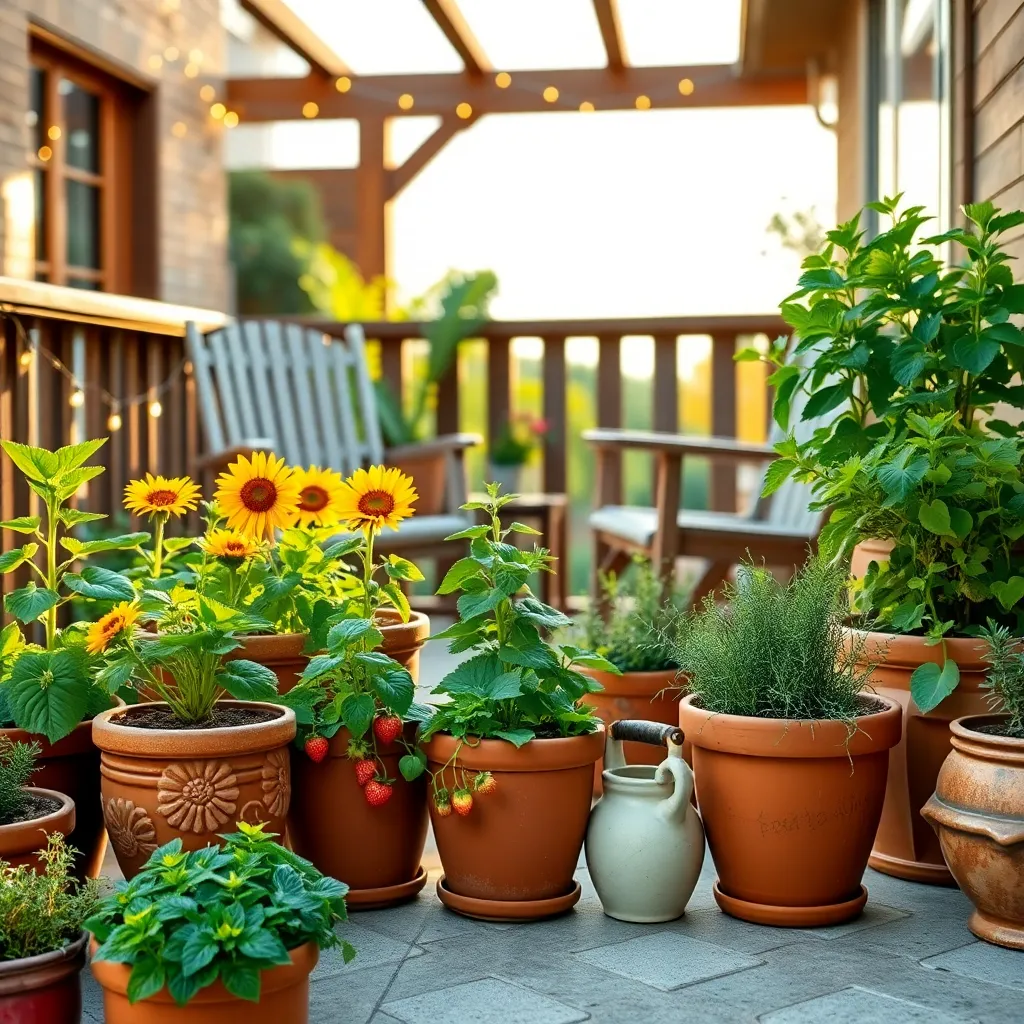
Choosing compact plant varieties is essential for container gardening in small yards. These plants are specifically bred to thrive in limited spaces, making them ideal for producing lush foliage and blooms without overwhelming your area.
Consider selecting dwarf or miniature versions of popular plants like tomatoes, peppers, and herbs. These varieties require less space and can often be grown more densely, allowing you to maximize your yield in a compact garden setting.
When selecting compact plants, pay attention to their root systems. Plants with shallow roots, such as lettuce and radishes, are particularly well-suited for container gardening as they do not require deep soil to grow effectively.
For those looking to add some color, opt for compact flowering plants such as petunias, marigolds, and zinnias. These flowers not only fit neatly into containers but also provide vibrant displays that can enhance the aesthetic appeal of your garden space.
Ensure that your containers have appropriate drainage and are filled with a high-quality potting mix. This soil should be well-draining and nutrient-rich to support the growth and health of your compact plants.
Regular watering is crucial for container plants, as they can dry out more quickly than those in the ground. Check your plants daily during hot weather and water them until you see moisture seeping from the bottom of the pot to ensure they are adequately hydrated.
Utilize Vertical Space Efficiently
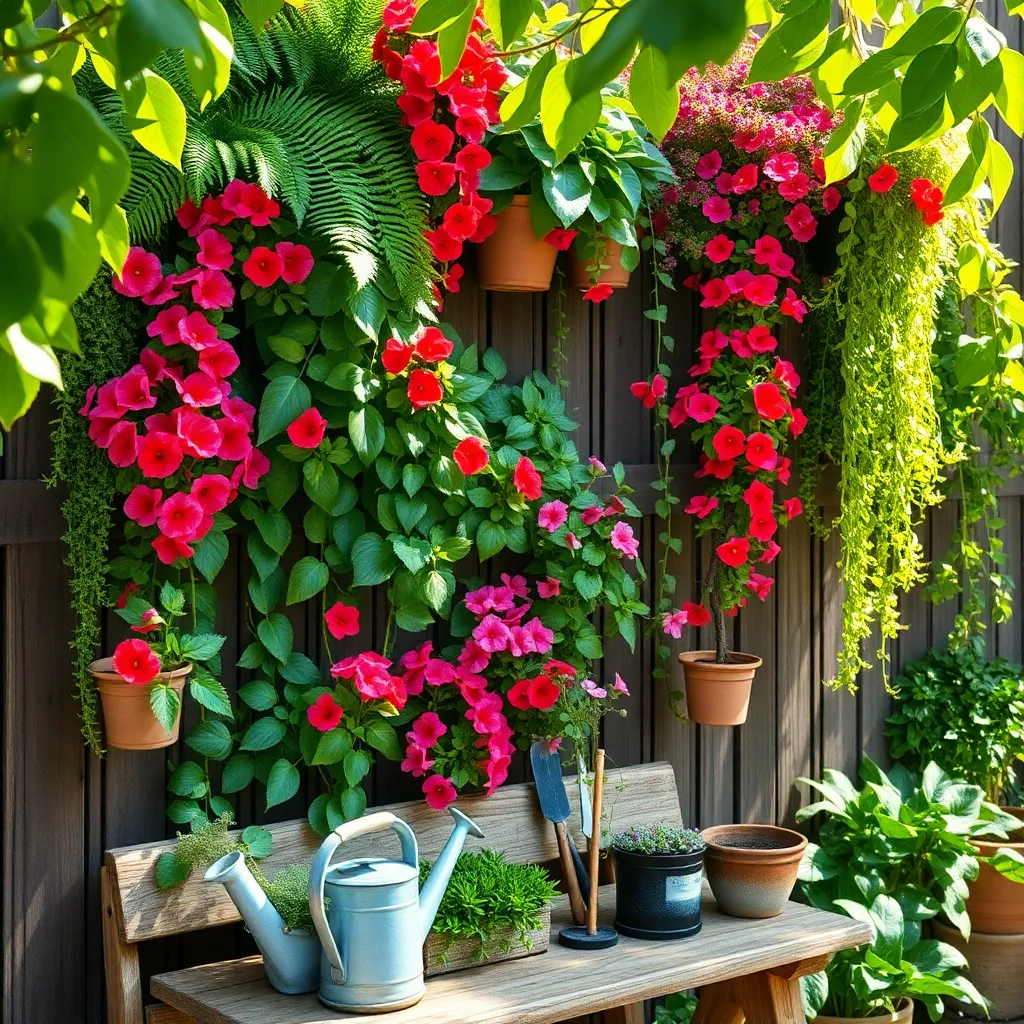
Vertical gardening is an excellent solution for maximizing space in small yards. By using trellises, shelves, or wall-mounted planters, you can grow a variety of plants without taking up much ground space.
Consider using a sturdy trellis to support climbing plants like peas, beans, or cucumbers. These fast-growing plants thrive in well-draining soil and require regular watering, especially during their peak growing season.
Wall-mounted planters or vertical pallet gardens can house smaller plants such as herbs, strawberries, or succulents. Make sure these containers have adequate drainage holes, and use a high-quality potting mix to ensure healthy root development.
For those who want to experiment with more advanced techniques, hydroponic systems offer a unique way to grow vertically. These systems can be ideal for growing leafy greens and herbs, requiring a nutrient-rich water solution and a stable support structure.
Select Lightweight Containers
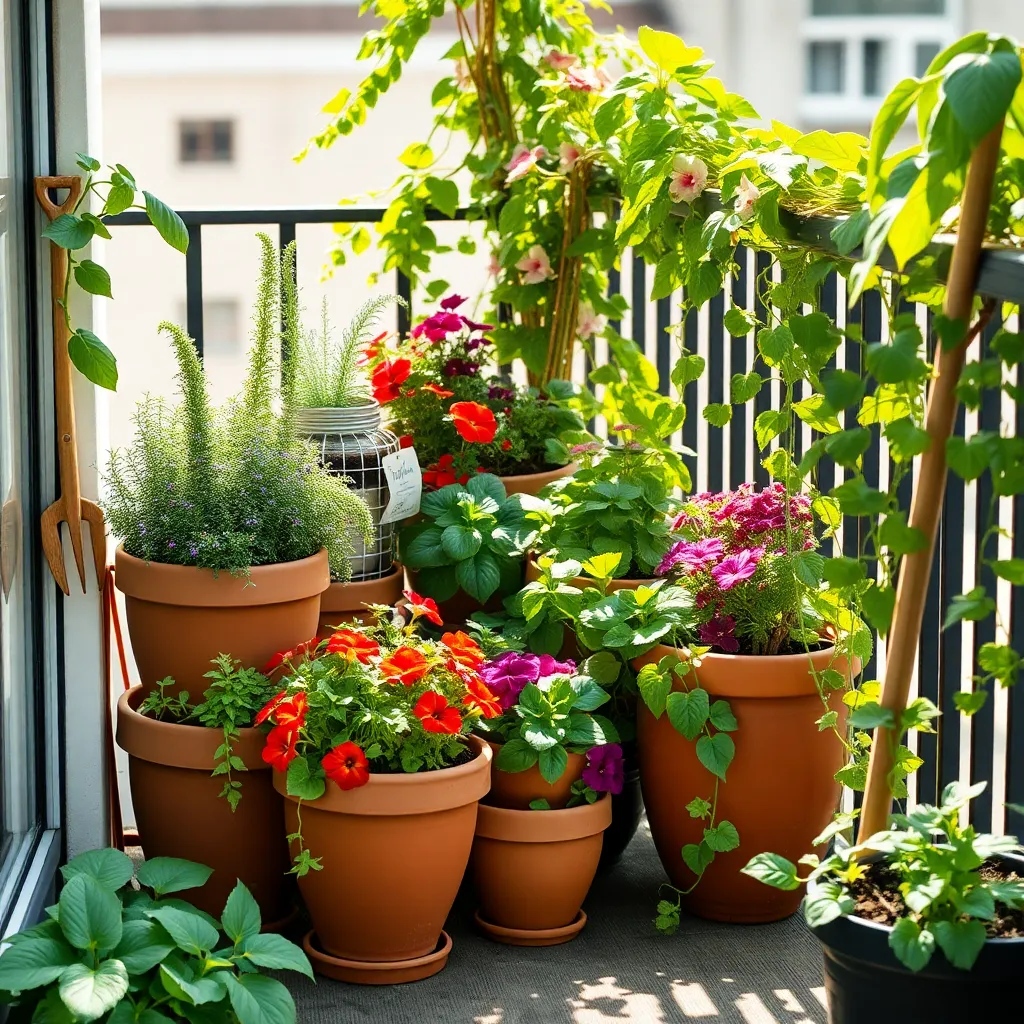
Choosing the right containers is crucial for successful container gardening, especially in small yards. Opt for lightweight materials like plastic, fiberglass, or fabric pots to make moving them around easier and less strenuous.
Lightweight containers are not only easy to transport but also retain moisture better than heavier options like clay or ceramic. This can be particularly beneficial in hot climates where frequent watering is necessary to prevent plants from drying out.
Consider using self-watering containers, which can be an excellent choice for both beginners and busy gardeners. These containers help maintain consistent moisture levels, ensuring that your plants are hydrated even when you’re unable to water them regularly.
For those looking to grow larger plants or small trees, select containers with a wide base to prevent tipping over. This ensures stability and provides enough space for root growth, which is essential for the health of larger plants.
Additionally, ensure that all containers have adequate drainage holes to prevent waterlogged soil, which can lead to root rot. You can improve drainage by adding a layer of gravel or broken pottery at the bottom of the pot before adding soil.
When selecting soil, opt for a lightweight potting mix specifically designed for containers. This mix will typically contain components like peat moss, vermiculite, or perlite, which enhance aeration and drainage, crucial for healthy plant growth.
Incorporate Self-Watering Systems
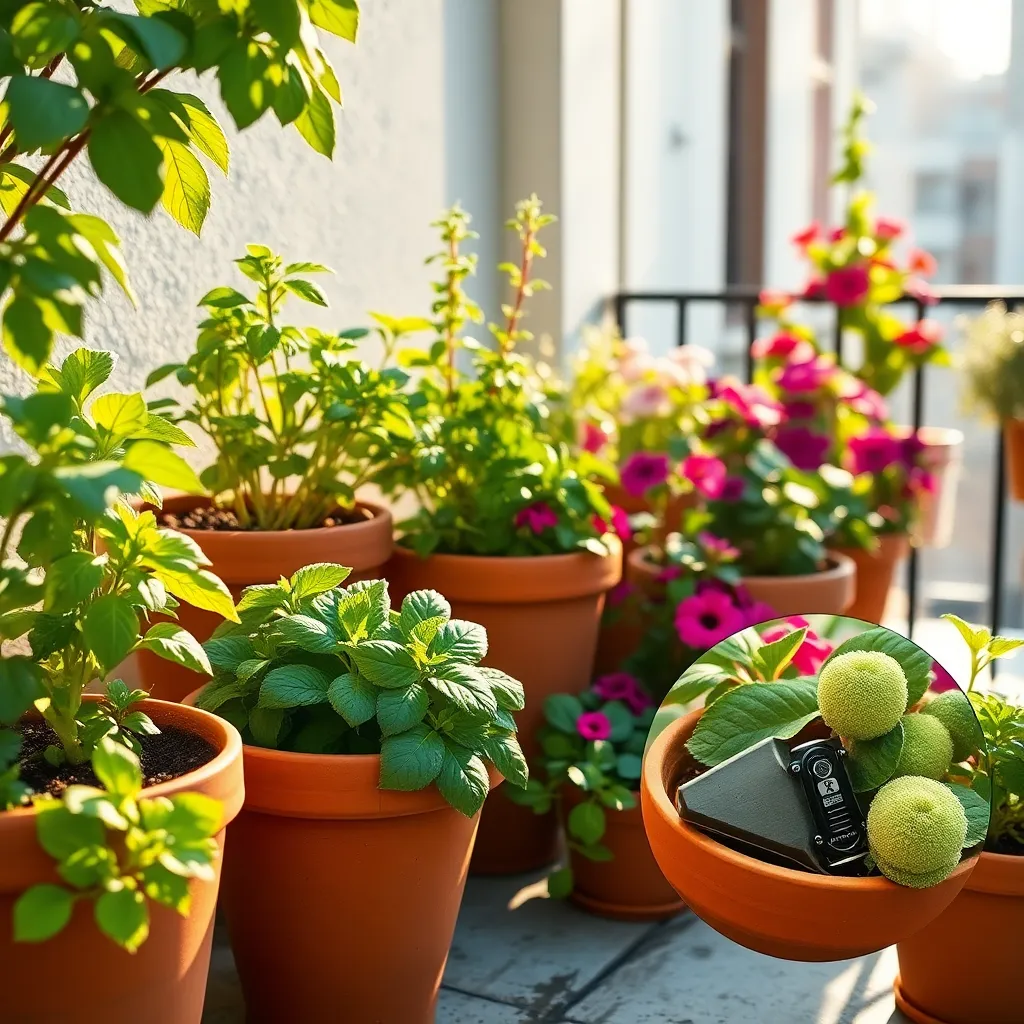
Integrating a self-watering system into your container garden can significantly reduce the frequency of manual watering. These systems are particularly beneficial for busy gardeners or those who live in climates with inconsistent rainfall, ensuring that plants receive a consistent supply of moisture.
Start by choosing containers with built-in reservoirs or purchase self-watering kits that can be adapted to your existing pots. Self-watering containers typically have a water reservoir at the bottom that allows plants to draw up water as needed, reducing the risk of overwatering.
When setting up your self-watering system, use a well-draining potting mix that helps maintain proper moisture levels. Adding a layer of mulch on top of the soil can further help retain moisture, keeping the plant roots cool and hydrated.
For those with more experience, consider creating a DIY self-watering setup using plastic bottles or wicking systems. Ensure that the reservoir has a visible water level indicator so you can easily monitor and refill it, keeping your plants healthy and thriving with minimal effort.
Rotate Containers for Sunlight
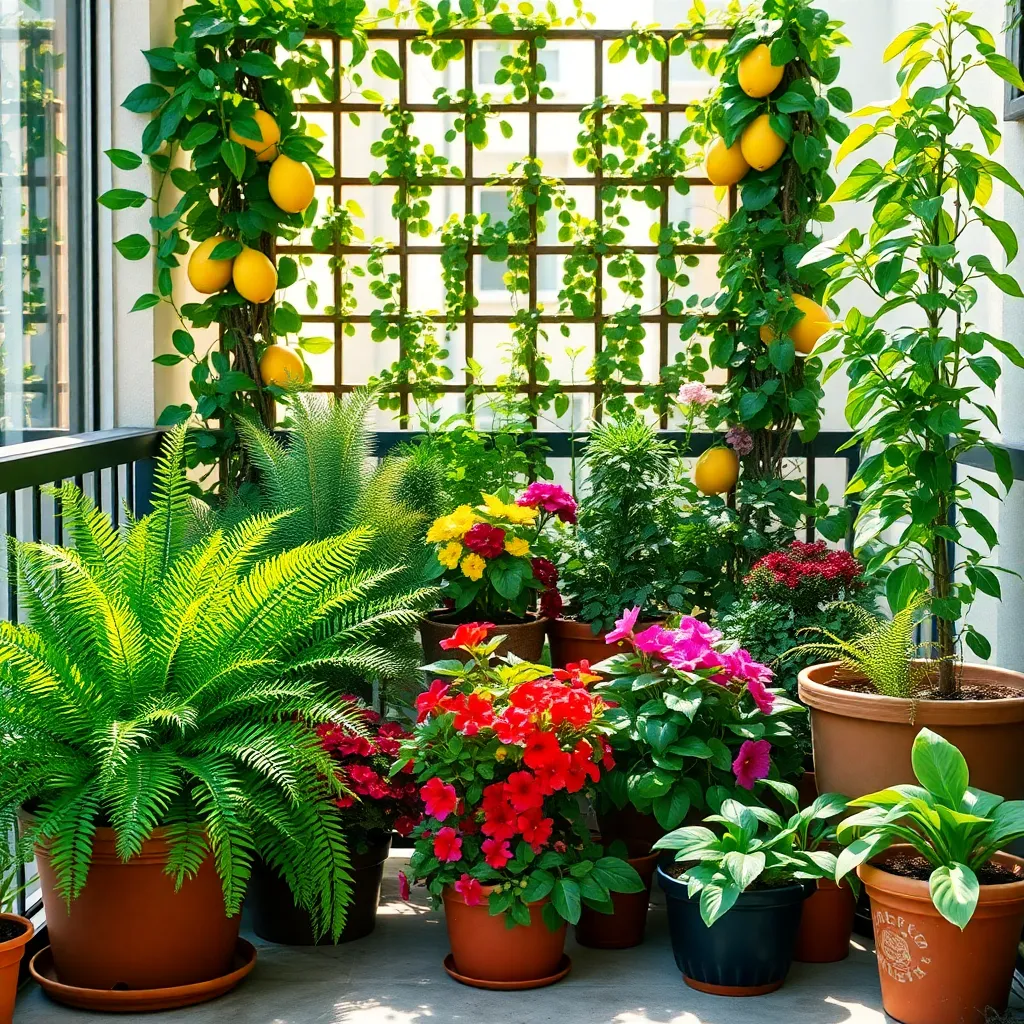
Container gardening offers flexibility, but it also means your plants may not always be in the optimal spot for sunlight. Regularly rotating your containers ensures that all sides of your plants receive equal sunlight, promoting even growth and preventing one-sided leaning.
Every few days, give your containers a quarter turn to distribute sunlight exposure evenly. For those new to container gardening, consider placing your pots on a wheeled saucer or plant caddy, which makes rotation effortless and protects surfaces from water damage.
It’s important to recognize the specific sunlight needs of your plants. Sun-loving plants like tomatoes and peppers require at least 6-8 hours of direct sunlight, while shade-tolerant varieties like ferns and hostas thrive with less.
Advanced gardeners can take advantage of seasonal changes by adjusting the orientation of their container plants. In the cooler months, rotating containers to maximize sun exposure can help maintain plant health and vigor.
Conclusion: Growing Success with These Plants
In embracing the art of container gardening for small yards, we’ve uncovered five key relationship insights: adaptability, as seen in choosing the right containers; creativity, through unique plant combinations; nurturing, by understanding plant care; patience, in waiting for growth; and resourcefulness, by maximizing limited space. These principles mirror the essential elements of nurturing a thriving relationship, reminding us that just like a flourishing garden, relationships require attention, creativity, and care.
As a practical next step, consider selecting a container and plant that symbolize your relationship’s growth potential. Whether it’s a vibrant flower or a sturdy fern, let it serve as a reminder of your commitment to nurturing your bond.
To ensure these insights remain at your fingertips, bookmark this article now. This way, you can revisit and draw inspiration whenever your relationship needs a little extra care.
Looking ahead, remember that every step you take towards enriching your relationship today lays the foundation for a successful, flourishing future together. Embrace the journey with optimism, knowing that much like a beautifully tended garden, your relationship can thrive with persistent love and effort.

